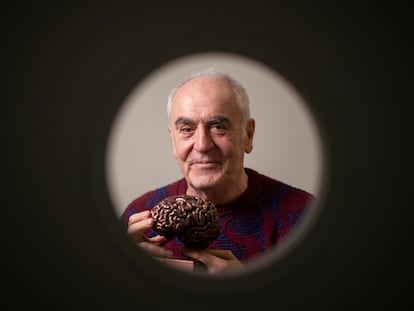(i∂+m)Φ=0 Is this really the formula for love?
Paul Dirac developed an equation that integrates aspects of special relativity and quantum physics, but never imagined it would one day be associated with romance

The quantum world is an exciting place. Between all the equations, theoretical cats and paradoxes, we can also find God rolling the dice. Everything is possible, because in the particle universe, imagination has been greater than reality ever since Irish physicist George J. Stoney (1826-1911) hypothesized about the existence of a minimal unit of electric charge that he called the electron.
The study of nature on a micro scale is based on Stoney’s 1881 quantum hypothesis, and he was the first to “quantify” a form of energy that was thought to be continuous. Others followed, including British physicist Paul Dirac (1902-1984) who formulated a relativistic equation in 1928 to describe the electron. Dirac derived his equation from an earlier one developed by Erwin Schrödinger that described the evolution in time of a quantum system.
To put it very simply, Dirac’s equation explained electron behavior on a subatomic scale. He accomplished this by unifying the principles of quantum mechanics and relativity in what many call one of the most elegant equations in physics:
(i∂+m)Φ=0
If you have seen this equation tattooed on someone’s body, it’s because it not only describes the phenomenon of quantum entanglement, but has also been called the formula for love. Why? Because the equation implies that if two particles are connected for a time and then separate, what happens to one will continue to affect the other despite the separation.
Popular culture has somehow taken a mathematical equation to be the formula for love. It’s a strange turn of events for the ascetic physicist, part genius and part madman, who devised such a beautiful equation. It has now transcended the scientific world and has become a tattoo on young people who seal their love with padlocks on bridge railings.
British science writer Jim Baggott’s book, The Quantum Story: A History in 40 Moments (2011), tells the story of Dirac’s formula and explains the concept very simply. Baggott gives us an up-close look at Dirac, a man immersed in complex mathematical problems who spent half his life developing an original relativistic quantum theory.
By establishing a four-dimensional space-time with matrices of four rows and four columns, Dirac liberated the electron by describing its motion in an electromagnetic field. He then simplified the mathematics until he formulated the ingenious equation that has become famous beyond the scientific community for its amorous interpretation.
Curiously, some couples talk about quantum entanglement as if there is a minimum unit of love that can be “quantumized.” At first glance, they may be right since love is not a continuous form of energy either.
Sign up for our weekly newsletter to get more English-language news coverage from EL PAÍS USA Edition
Tu suscripción se está usando en otro dispositivo
¿Quieres añadir otro usuario a tu suscripción?
Si continúas leyendo en este dispositivo, no se podrá leer en el otro.
FlechaTu suscripción se está usando en otro dispositivo y solo puedes acceder a EL PAÍS desde un dispositivo a la vez.
Si quieres compartir tu cuenta, cambia tu suscripción a la modalidad Premium, así podrás añadir otro usuario. Cada uno accederá con su propia cuenta de email, lo que os permitirá personalizar vuestra experiencia en EL PAÍS.
¿Tienes una suscripción de empresa? Accede aquí para contratar más cuentas.
En el caso de no saber quién está usando tu cuenta, te recomendamos cambiar tu contraseña aquí.
Si decides continuar compartiendo tu cuenta, este mensaje se mostrará en tu dispositivo y en el de la otra persona que está usando tu cuenta de forma indefinida, afectando a tu experiencia de lectura. Puedes consultar aquí los términos y condiciones de la suscripción digital.











































